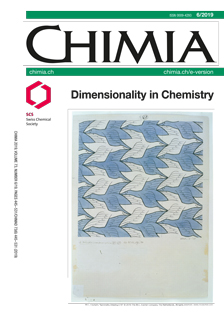Synthesis of Molecular 2D Materials via Low-energy Electron Induced Chemical Reactions
DOI:
https://doi.org/10.2533/chimia.2019.473PMID:
38549209Keywords:
2d materials, Carbon nanomembrane, Electron irradiation induced chemistry, Molecular nanosheet, Organic semiconductorAbstract
After the demonstration of a variety of inorganic two-dimensional (2D) materials (graphene, hBN, MoS2, etc.), molecular 2D materials have attracted a significant research interest as well. However, the direct synthesis of these materials is an exceptionally challenging task for chemists. In this review article, a simple and robust physical method for the synthesis of molecular 2D materials is presented based on low-energy electron induced chemical reactions in aromatic molecular layers. In this way, ultrathin (~1 nm) molecular nanosheets with adjustable chemical and physical properties called Carbon Nanomembranes (CNM) can be prepared. Moreover, the method enables the synthesis of various other 2D organic-inorganic hybrids (e.g. MoS2-CNM, graphene-CNM lateral heterostructures, etc.) or ~20 nm thick nanosheets of organic semiconductors. Mechanisms of the reaction and functional properties of these molecular 2D materials including their chemical functionalization and engineering of hybrid hierarchical structures for application in nanoscience and nanotechnology are discussed in this article.Downloads
Published
2019-07-26
Issue
Section
Scientific Articles
License
Copyright (c) 2019 Swiss Chemical Society

This work is licensed under a Creative Commons Attribution-NonCommercial 4.0 International License.
How to Cite
[1]
A. Turchanin, Chimia 2019, 73, 473, DOI: 10.2533/chimia.2019.473.







